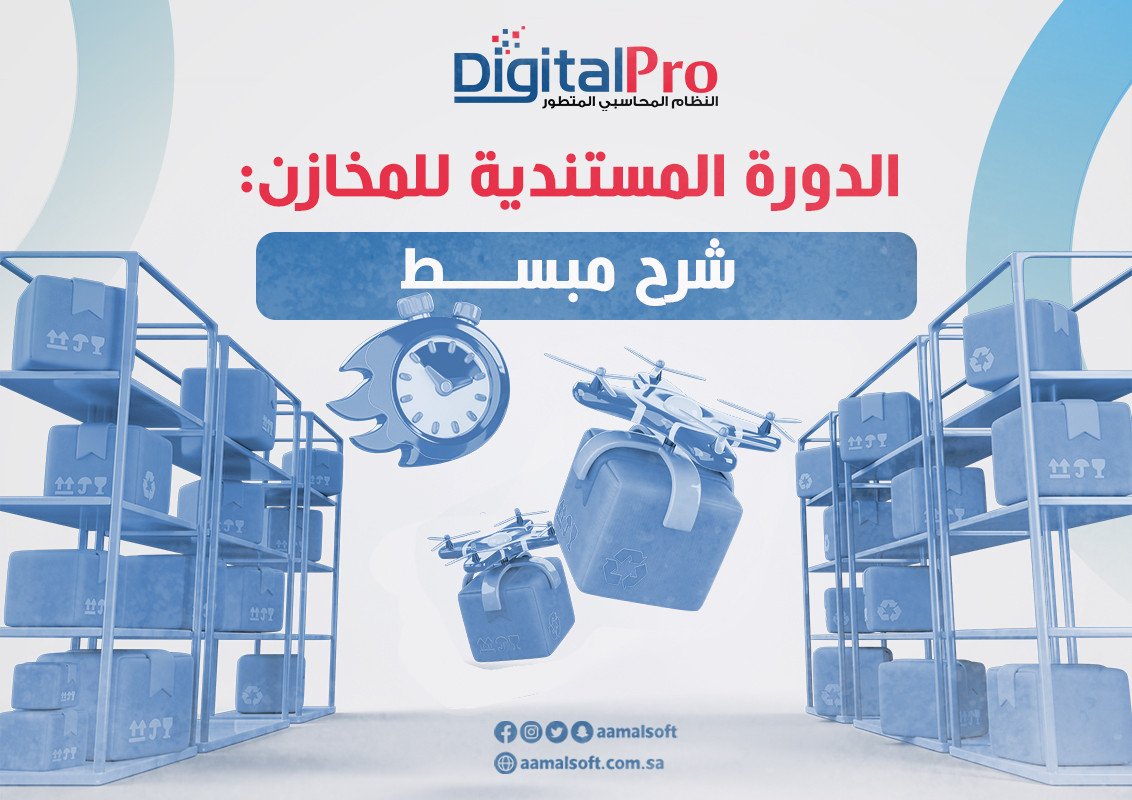Document cycle for warehouses: a simplified explanation
The stores documentation cycle is one of the fundamental aspects of any accounting or administrative system that aims to control the movement of materials within an organization. This cycle seeks to organize operations related to receiving, issuing, and storing materials and supplies, ensuring accuracy in information and avoiding errors or losses. In this article, we will explain this cycle in a simplified way for non-accountants, highlighting its key stages and objectives.
First: Designing the Documents Cycle for Material Issuance
This stage represents the starting point for any issuance process from stores. It aims to ensure that issuing operations are carried out based on official documented records and that every material movement is accurately recorded.
-
Material Issue Request
Before issuing any materials from the store, an official issue request must be submitted containing accurate data related to the required materials. This data includes:
-
Item or material code
-
Required quantity
-
Requesting department or section
-
Purpose of use (e.g., production or maintenance)
-
Request date and actual issue date
This request serves as an authorization for issuance and is not executed until the stock is reviewed and availability is confirmed.
-
Recording and Confirming Issued Materials
After the issue authorization is granted, the issued quantities are recorded in the store ledger or via a dedicated electronic system. This record includes:
-
Material name
-
Issued quantity
-
Unit price
-
Beneficiary department
-
Recipient’s signature
This information is also documented in approved records to serve as a reference at the end of the accounting period and to be used in evaluating production costs or monitoring inventory.
Second: Pricing Methods for Issued Materials
Pricing the materials issued from stores is a crucial accounting step, as prices are used in calculating the cost of production or the provided service. There are two primary pricing methods: standard pricing and actual pricing, with the latter being more common. The most popular actual pricing methods include:
-
First-In, First-Out (FIFO)
This method means that the first quantities entered into stores are the first to be issued. These earlier prices are used to price issued materials. Advantages include:
-
Reflecting older purchase prices
-
Suitable during price declines
However, one drawback is that it may inflate profits during periods of rising prices, giving a misleading financial picture.
-
Last-In, First-Out (LIFO)
This method assumes that the last quantities received into the store are the first to be issued. Thus, the most recent prices are used to price issued materials. This method is often used in cases of rising price trends because it reduces reported profits and increases cost of goods sold, potentially lowering tax liabilities.
However, it may not accurately reflect the actual remaining inventory value. -
Weighted Average Cost Method
This method calculates the average unit cost of all available stock, both old and new. This average is then used to price issued materials. The average is recalculated after every new supply. Advantages include:
-
Simplified accounting operations
-
Avoiding sharp price fluctuations
On the downside, it does not necessarily reflect the current market value.
Third: Reviewing Returned, Damaged, and Inventory Variance Materials
In practical operations, it's natural to encounter discrepancies between the actual inventory records and the quantities physically available in stores due to misestimations, damages, or returns. A defined mechanism exists to handle such cases.
-
Handling Returned Materials to Stores
Sometimes, not all issued materials are used, and the excess is returned to the store. In this case:
-
Returned materials are recorded as new incoming stock
-
They are priced at the original issue price
-
An official return document is issued and recorded in the ledgers
This process helps maintain accurate stock balances and reduces waste.
-
Handling Damaged Materials and Inventory Differences
Some materials may be damaged due to poor storage, expiration, or other reasons. Inventory discrepancies may also arise during periodic counts. The handling is as follows:
-
Damaged materials are priced at their issue price and recorded as a loss or waste
-
Inventory shortages are treated as losses and recorded as costs
-
Inventory surpluses are treated as new supplies and priced using the latest purchase prices
Documenting these operations is essential for control and accounting purposes, and to avoid recurring errors.
Importance of the Stores Documentation Cycle
The stores documentation cycle plays a vital role in:
-
Ensuring proper movement of materials within the organization
-
Minimizing material losses or waste
-
Providing accurate data to determine production costs
-
Supporting managerial decisions related to procurement and inventory
-
Facilitating inventory and financial audits
The stores documentation cycle is not just a routine procedure; it is an effective organizational tool that ensures the accuracy of inventory-related operations. By designing precise documents, applying appropriate pricing methods, and systematically addressing returns and discrepancies, organizations can reduce losses, enhance internal control, and improve operational efficiency.
 English
English
 العربية
العربية


Add New Comment